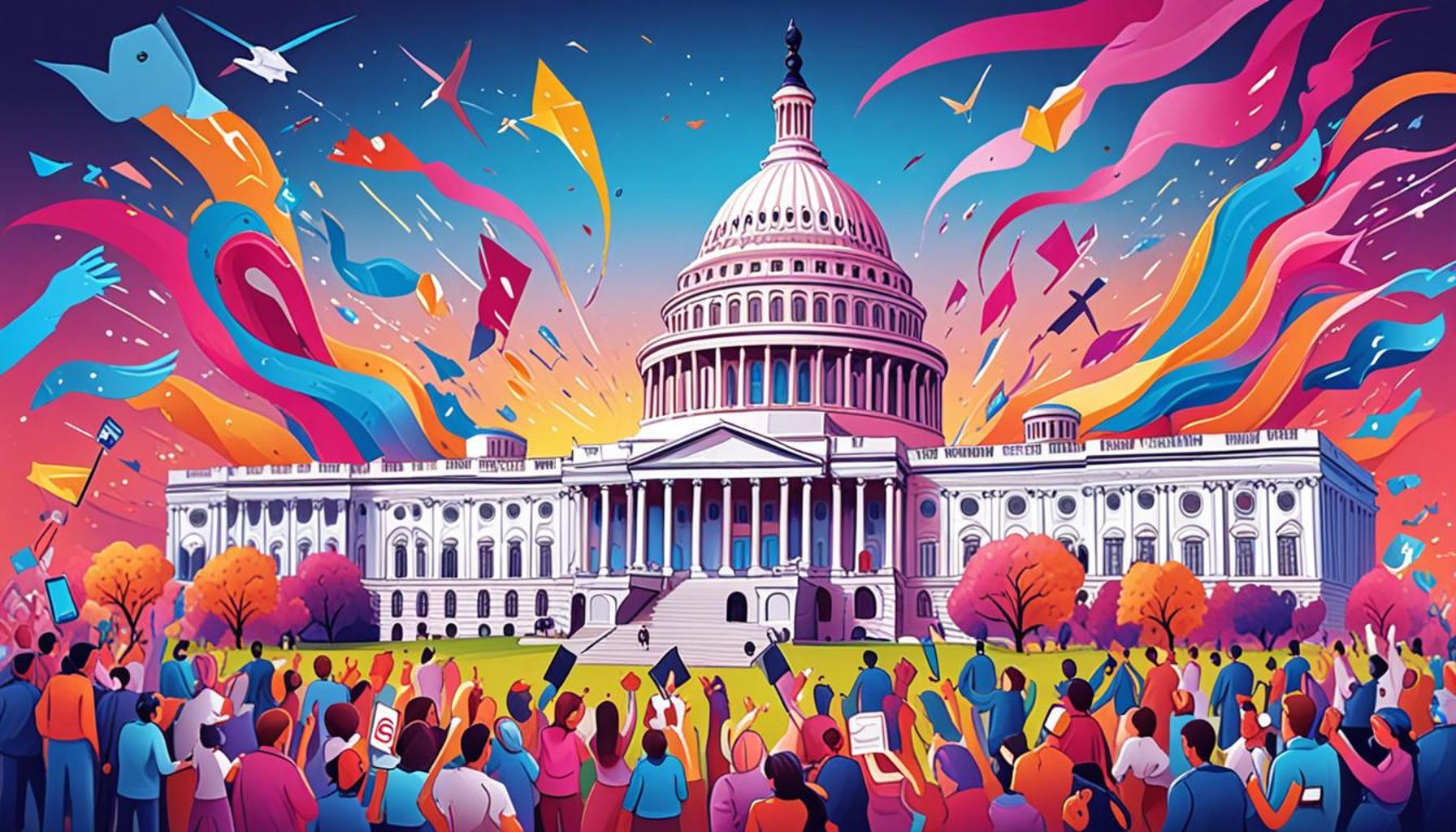The Evolution of Automation Tools in Digital Outreach

Understanding the Evolution of Digital Outreach Tools
In recent years, the landscape of digital outreach has transformed dramatically, influenced significantly by the rise of automation tools. These tools are essential for businesses looking to optimize their outreach strategies, ensuring that communication remains not only efficient but also effective in fostering connections with their audiences.
As digital communication has evolved, several key features of automation tools have gained prominence:
- Email Automation: This feature enables organizations to set up personalized communication through automated email sequences. For instance, a company can automatically send a welcome email to new subscribers, followed by a series of tailored messages based on user behavior. This not only saves time but enhances customer satisfaction by providing relevant information without delay.
- Social Media Management: Automation tools allow businesses to schedule posts across multiple platforms, ensuring a consistent online presence. They also offer analytics to measure engagement metrics, such as likes, shares, and comments, enabling companies to refine their content strategies. A restaurant, for example, can schedule promotional posts for its special deals and analyze customer interactions to determine the best times to post.
- Lead Scoring: Through automated data analysis, businesses can identify which leads are more likely to convert based on their interactions with the brand. This means a sales team can focus their efforts on high-potential leads rather than spreading resources thinly across uninterested contacts. For example, a software provider may score leads higher if they frequently visit pricing pages or download product brochures.
The evolution of these technologies has not only propelled productivity within organizations but has also significantly altered how companies engage with their audiences. These tools offer a streamlined way to manage interactions in an increasingly crowded digital marketplace.
Historical Context
Understanding the historical context of digital outreach tools is crucial. In the early 2000s, businesses primarily relied on basic email marketing programs with little automation. As technology advanced, the introduction of Customer Relationship Management (CRM) systems in the 2010s laid the groundwork for more sophisticated outreach tools, enabling data-driven strategies that are commonplace today.
Continuous Innovations
The innovation surrounding digital outreach is ongoing. Tools are now integrating artificial intelligence (AI) to enhance predictive capabilities and personalize communication further. For example, AI can help businesses analyze customer preferences and tailor outreach strategies accordingly, making messages more relevant and timely.
Future Trends
Looking ahead, we can anticipate trends such as the rise of conversational marketing through chatbots and interactive content, which are set to redefine customer engagement. As more businesses adopt these technologies, the competition for consumer attention will intensify, challenging marketers to continually adapt and innovate.
In conclusion, understanding the evolution of digital outreach offers valuable insights into the increasingly complex world of customer engagement. Efficiency harmonizing with creativity is necessary in this digital age. Join us as we explore how far we have come in this fascinating digital journey and what lies ahead.
YOU MAY ALSO LIKE: Read read another article
The Journey Toward Automation in Digital Outreach
The progression of automation tools in digital outreach is a fascinating tale of technological advancement, where necessity has led to innovation. Initially, organizations relied on rudimentary methods for communication—methods that required significant manual effort and time. However, the increasing demand for effective outreach paved the way for a new era marked by automation.
As businesses began to see the potential of digital channels, they recognized the need for more streamlined and efficient communication processes. Automation tools started to gain traction, evolving from simple email dispatchers to multifunctional platforms capable of managing entire outreach campaigns. This shift not only enhanced productivity but also allowed for more strategic engagement with consumers.
The Rise of Comprehensive Tools
By the mid-2010s, a wave of comprehensive digital outreach tools emerged, transforming how organizations approached their marketing strategies. Among these were:
- Multi-Channel Integration: Modern automation tools allow businesses to connect with their audience across various platforms, including email, social media, and SMS. This means a unified message can reach customers no matter where they are most active. For example, a national retail chain might announce a seasonal sale via email while simultaneously promoting it through targeted social media campaigns.
- Content Personalization: The ability to tailor content based on user interactions has revolutionized how brands communicate. Automation tools can segment audiences and deliver distinct messages that resonate with each group’s preferences and behaviors. A fashion retailer, for instance, can send style recommendations based on past purchases or browsing history, creating a more engaging shopping experience.
- Performance Tracking: These tools provide analytics that allow businesses to monitor the effectiveness of their outreach efforts. Marketers can analyze key performance indicators (KPIs) to understand what resonates with their audience. For example, a non-profit organization can assess the success of an email campaign advocating for donations by tracking open rates and click-through rates to adjust future communications accordingly.
The integration of data analytics with these automation tools has offered organizations profound insights, enabling them to adapt their strategies in real time. As companies continue to navigate the complexities of digital outreach, the evolution of automation tools remains crucial for maintaining a competitive edge. Businesses that harness the power of these tools are not just enhancing their operational efficiency; they are also fostering genuine connections with their audiences.
The Importance of Adaptability
In today’s fast-paced digital landscape, the ability to adapt is paramount. As customer preferences shift and new trends emerge, automation tools must evolve accordingly. Companies that leverage insights from these tools to adjust their outreach strategies are more likely to succeed in engaging consumers amidst the noise of the digital marketplace.
As we continue to explore the evolution of automation tools in digital outreach, it becomes clear that these technologies are not just additional resources; they are the backbone of innovative and effective marketing communication. The ability to automate outreach processes while maintaining a personal touch is integral to building long-lasting relationships with customers in this ever-evolving digital environment.
| Category of Automation Tools | Key Features |
|---|---|
| Automated Email Campaigns | Streamlined outreach with personalized, scheduled communications. |
| Social Media Management Tools | Facilitates planning, scheduling, and analyzing social content for optimal engagement. |
| Customer Relationship Management (CRM) Systems | Integrates data and communication, enhancing customer interaction and tracking metrics. |
| Chatbots and Virtual Assistants | 24/7 customer support with real-time engagement for lead generation. |
| Content Automation Software | Automatically creates and distributes content based on audience insights. |
As the digital landscape continuously evolves, the importance of automation tools in outreach strategies becomes more pronounced. These tools offer a plethora of advantages, which include enhancing communication efficiency and personalizing customer interactions. For instance, automated email campaigns allow businesses to schedule and send out tailored campaigns, increasing the likelihood of higher engagement rates. Moreover, social media management tools not only help in scheduling posts but also in analyzing metrics to refine outreach strategies. Businesses can now identify their target audience and optimize content delivery times, driving engagement. In addition, CRM systems have revolutionized how organizations track customer interactions, allowing them to tailor their approach to client needs and preferences.Investing in these automation tools not only saves precious time but also creates a framework for sustainable growth in digital outreach. As companies embrace these innovations, they stand to gain a competitive edge in their respective markets, prompting further exploration of these advanced systems.
CHECK OUT: Click here to explore more
The Role of Emerging Technologies in Modern Automation
As the landscape of digital outreach continues to evolve, emerging technologies are playing an increasingly critical role in shaping automation tools. From artificial intelligence (AI) to machine learning (ML), the integration of these technologies is not merely a trend but a substantial shift in how outreach campaigns are conceived, developed, and executed.
Artificial Intelligence and Predictive Analytics
The advent of artificial intelligence has revolutionized the way organizations approach digital outreach. AI enables platforms to analyze consumer data at a staggering scale, allowing for the identification of patterns and insights that were previously unattainable. For example, entertainment platforms like Netflix use AI algorithms to predict what shows or movies users are most likely to enjoy based on viewing history, creating hyper-personalized user experiences.
Predictive analytics, a subset of AI, takes this a step further by forecasting future consumer behaviors. Businesses can utilize these insights to predict when a customer might be ready to make a purchase or when they may need a reminder about an abandoned cart. Companies like Amazon leverage predictive modeling to tailor marketing campaigns that not only target individual preferences but also optimize timing, significantly improving conversion rates.
The Impact of Machine Learning on User Engagement
Machine learning has transformed digital outreach from a reactive to a proactive discipline. By continuously learning from user interactions, machine learning algorithms refine their predictions and suggestions over time. For instance, email marketing platforms like Mailchimp employ machine learning to determine the best send times for individual recipients, ensuring that messages land in inboxes when they are most likely to be read.
This technology allows businesses to adjust their communication strategies in real time. Retailers can analyze customer feedback and engagement levels to tweak their outreach games—experimenting with A/B testing to determine which headlines or images resonate best with audiences. A clothing brand, for example, might utilize machine learning to test different promotional visuals on social media, honing in on images that generate the highest engagement.
The Integration of Chatbots in Outreach Strategy
Alongside AI and ML, the introduction of chatbots has become a game changer in direct consumer interaction. Businesses employ chatbots to provide immediate and automated responses to customer inquiries, enhancing user experience by minimizing wait times. This round-the-clock service can nurture leads and answer common queries, effectively supporting sales teams in their outreach efforts.
Consider the case of online retailers, where chatbots guide visitors through the purchasing process, recommend products based on browsing history, and even facilitate customer support without human intervention. These automated interactions not only save time but also build a more engaged and informed customer base.
Future Trends in Digital Outreach Automation
Looking forward, the landscape of automation in digital outreach holds immense potential. The continued evolution of voice search technology and the integration of augmented reality (AR) into outreach strategies are setting the stage for a new wave of consumer engagement. Organizations are exploring how these cutting-edge technologies can transform user experiences further and extend the reach of their campaigns.
As these innovations unfold, companies that prioritize the continuous adoption of advanced automation tools will likely lead the pack in effective digital outreach strategies, paving the way for a future where personalized, data-driven communication is not just the norm but an expectation.
ADDITIONAL INSIGHTS: Expand your understanding here
Conclusion: Embracing the Future of Digital Outreach Automation
As we reflect on the evolution of automation tools in digital outreach, it is clear that the integration of advanced technologies such as artificial intelligence, machine learning, and chatbots has not only streamlined processes but also transformed the way businesses engage with their audiences. The ability to leverage predictive analytics for targeted messaging and tailor user experiences with machine learning emphasizes the necessity for organizations to stay ahead in a rapidly changing digital landscape.
The future of digital outreach lies in the continuous adaptation of these innovative tools. As voice search capabilities and augmented reality begin to intertwine with existing strategies, companies must embrace this momentum to create more immersive and personalized interactions with their customers. The evolving consumer expectations demand a shift from one-size-fits-all marketing to highly customized and data-driven approaches.
Furthermore, the rise of automation does not signal the end of human touch; rather, it highlights the importance of striking a balance between automated solutions and genuine human connections. Engaging with customers effectively will depend on maintaining authenticity while harnessing technology’s power.
In conclusion, businesses that proactively seek to integrate cutting-edge automation tools into their digital outreach strategies will likely emerge as leaders in their fields. By understanding and adapting to these advancements, organizations can ensure that they do not just keep pace but rather set the trends in a dynamic marketplace. The era of automation is here—embracing it will determine the success of future outreach campaigns.



